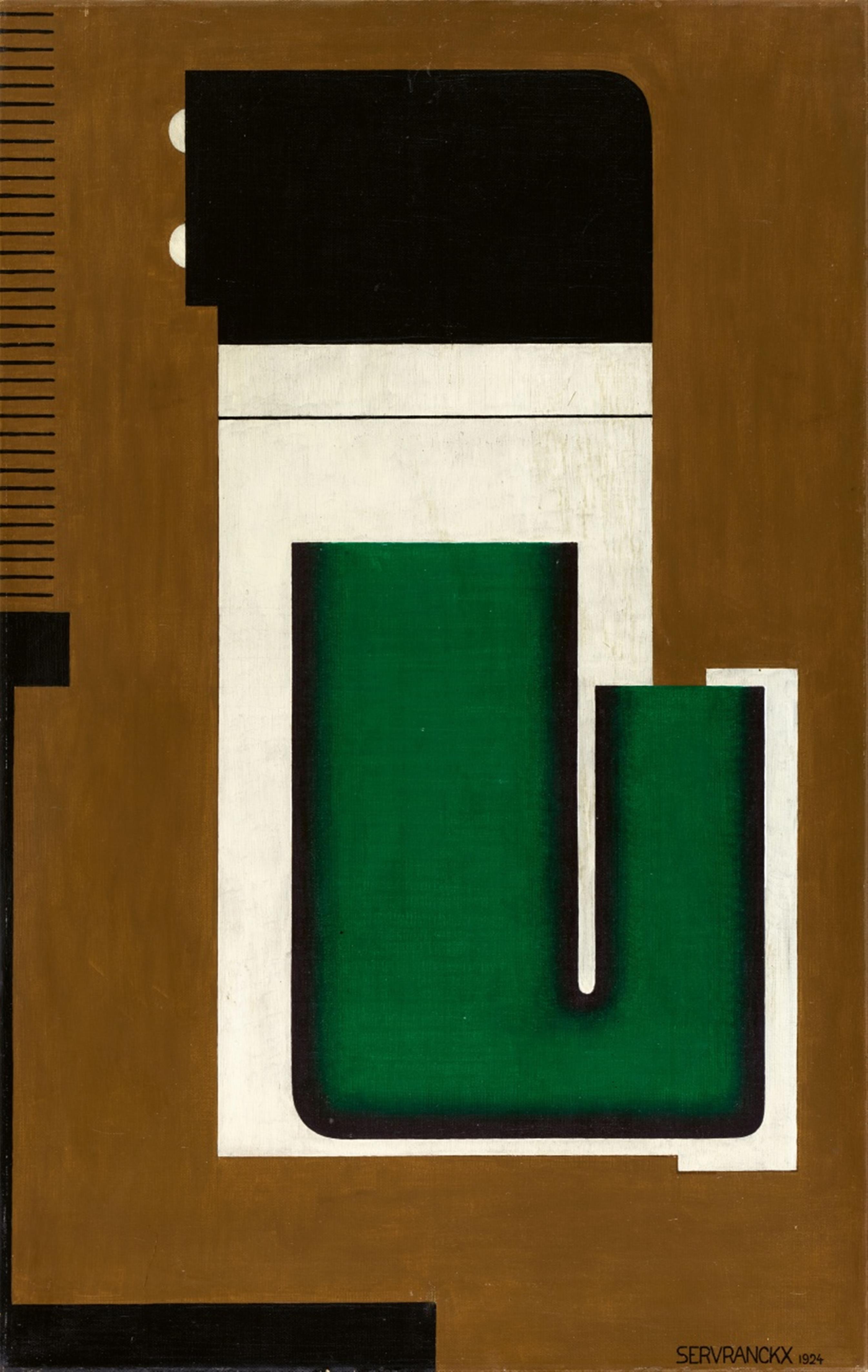Victor Servranckx
opus 4
1924
Oil on canvas 70.5 x 45 cm Framed. Signed and dated "SERVRANCKX 1924" in black lower right.
Geometric precision and the painterly engagement with colour, surface and volume are distinguishing characteristics of Viktor Servranckx's compositions from the early 1920s. The paintings that the artist provided with the prosaic title “Opus” and then numbered consecutively over the course of each year are surely among his most iconic works.
After his period at the academy, the painter and sculptor Servranckx developed a highly individual path to abstraction, which unmistakably borrows from Cubo-Futurism and Constructivism, but also from the Purist approaches of artists like Amédée Ozenfant or Le Corbusier. At times his compositions are reminiscent of the formal idiom of Léger or appear, as in the case of our work, to take the form of parts from fantastic machines.
The young Victor Servranckx had already established broad connections and knew how to combine a high level of intuition with a specific affinity for theoretical questions in his work (in 1922, for example, he and René Magritte composed the unpublished manifesto “L'art pur: Défense de l'esthétique”). He received his education as an artist between 1913 and 1917 at the Académie Royale des Beaux-Arts in Brussels. In 1917 his work was already being exhibited for the first time, at the Galerie Giroux, and in Belgium he quickly became a celebrated pioneer of the avant-garde with his constructive-abstract works of the 1920s. Just one year later, Servranckx showed his works at Léonce Rosenberg's Parisian gallery “L'Effort Moderne”, where he met Filippo Tommaso Marinetti, Theo van Doesburg, Fernand Léger and Marcel Duchamp, among others. It was not least due to his acquaintance with Duchamp that he was included in the exhibition of the Société Anonyme in New York. In the US Victor Servranckx also met the former Bauhaus teacher László Moholy-Nagy, who offered him a teaching position at the School of Design in Chicago. However, Servranckx turned down this offer and instead returned to Belgium. Numerous exhibitions followed, such as his inclusion at the Brussels World's Fair of 1958. Today his works can be found in numerous international museum collections, such as New York's Museum of Modern Art or the Museo Nacional Thyssen-Bornemisza in Madrid.
Provenance
Fernand Smeulders, St. Amandsberg/Ghent; Galerie Gmurzynska, Cologne; Private collection, Berlin
Literature
Exhib. cat. Hommage à Servranckx à l'occasion de son soixantième anniversaire - Hulde aan Servranckx ter gelegenheid van zijn zestigste verjaardag, Galerie "Les contemporains", Brussels 1957, with illus.
Exhibitions
Brussels 1965 (Musée des Beaux-Arts D'Ixelles), Servranckx, cat. no. 85 (label on stretcher); Hasselt 1970 (Provinciaal Begijnhof), Retrospectieve tentoonstelling Victor Servranckx, cat. no. 38 (label on stretcher)

